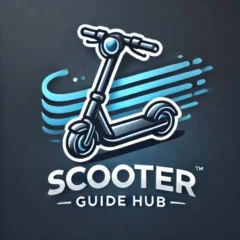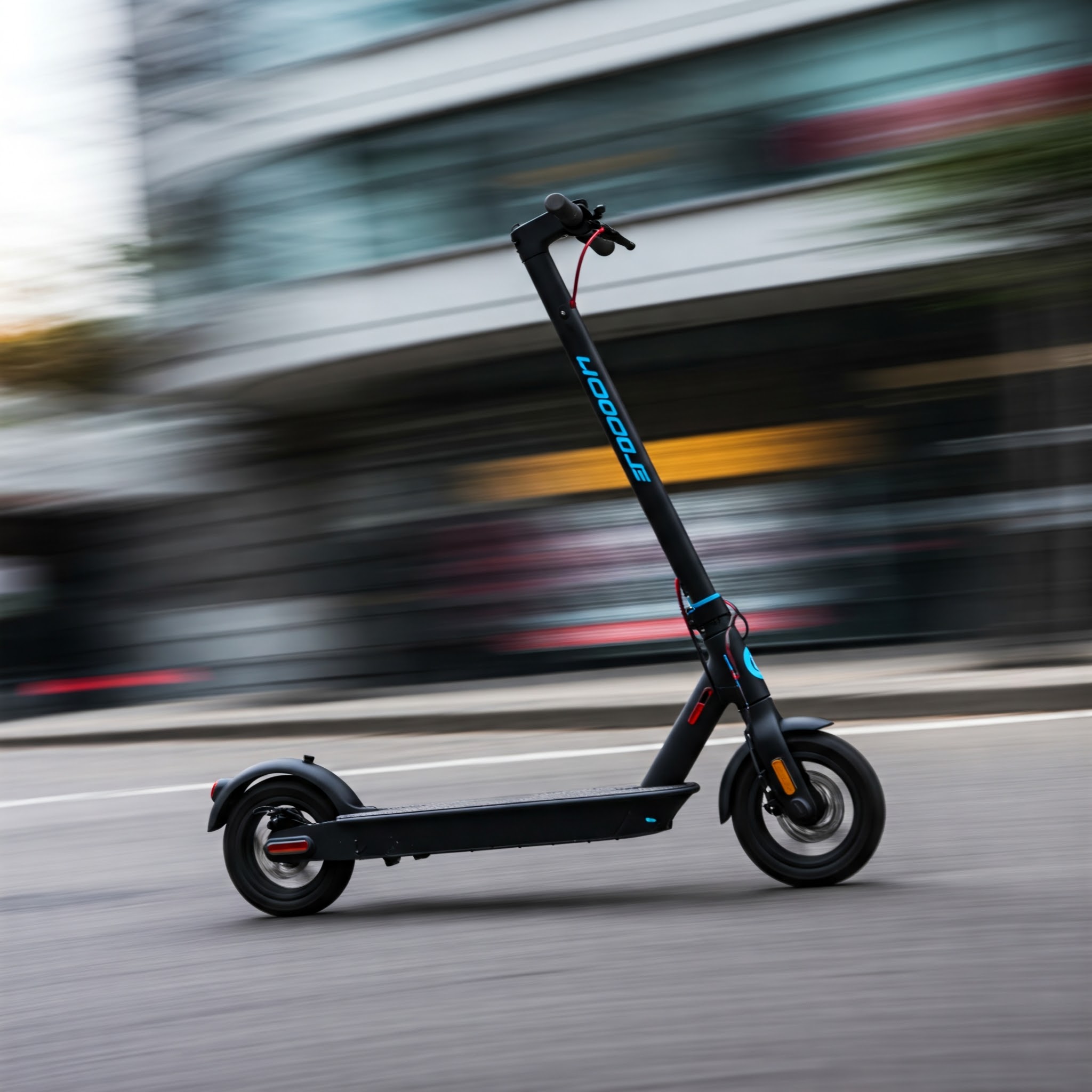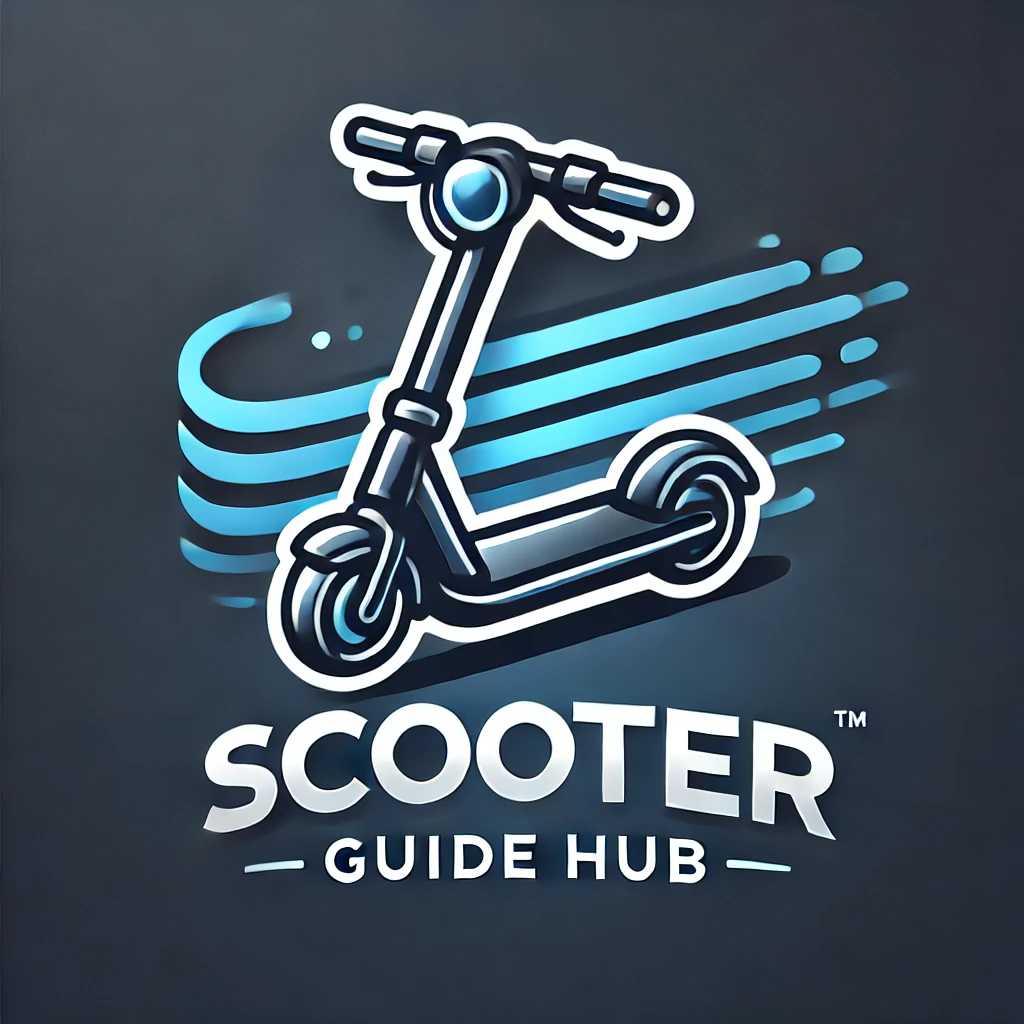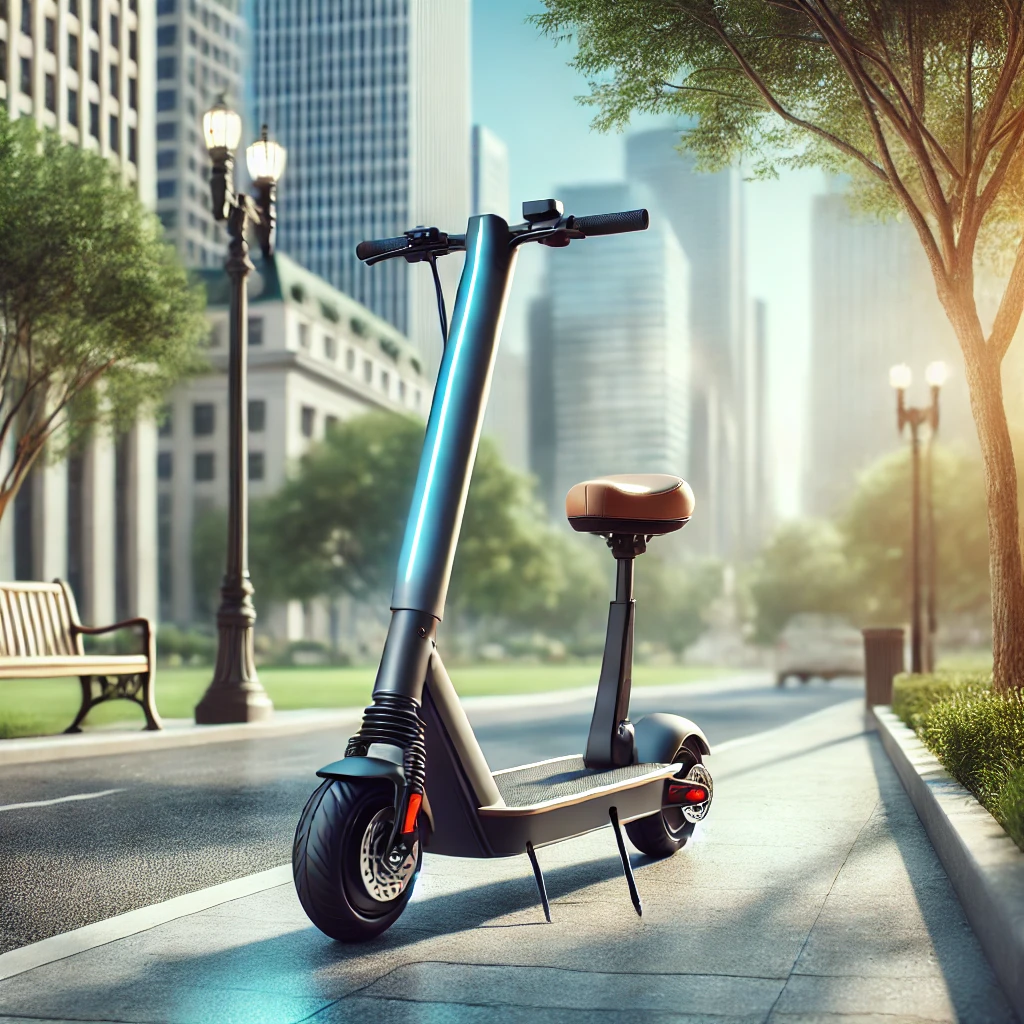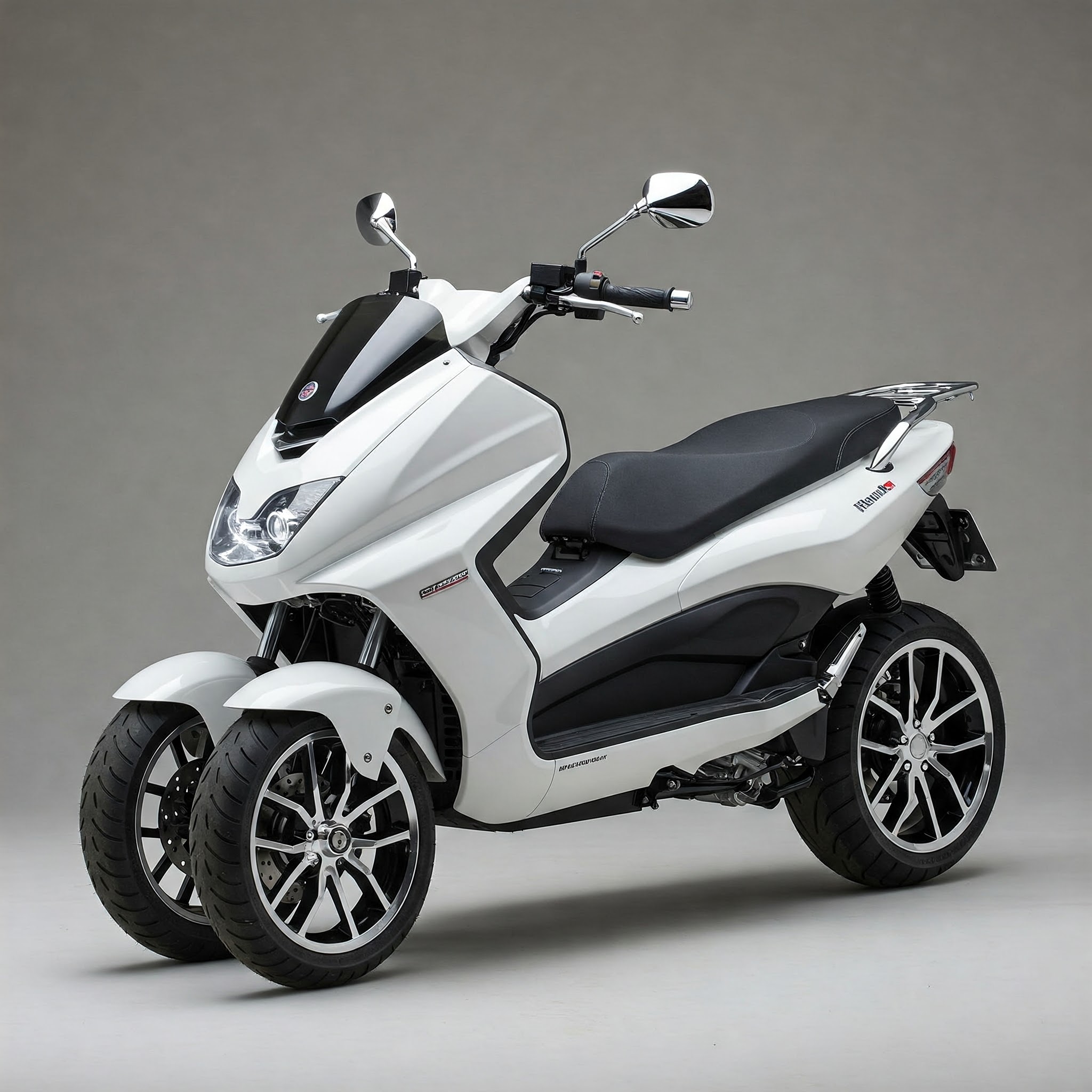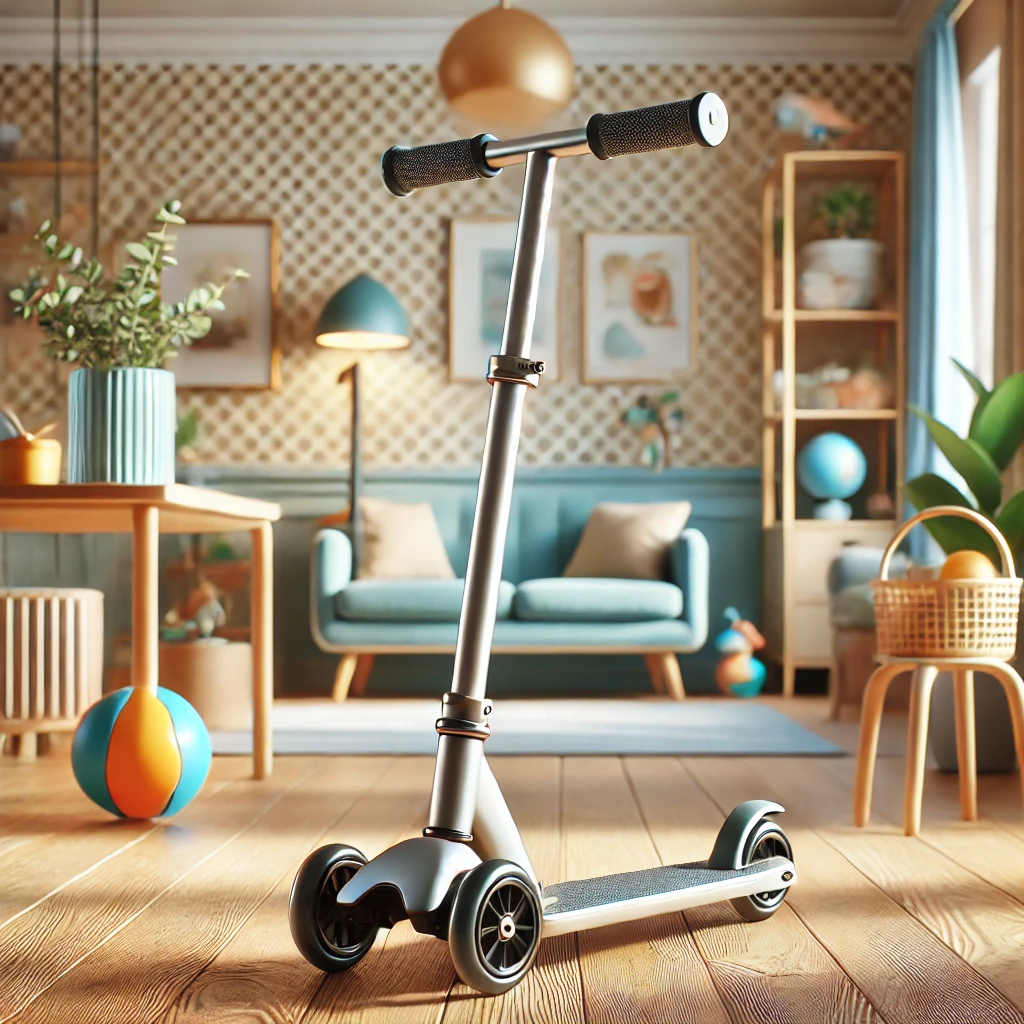The Need for Speed on Electric Scooters
In today’s fast-paced world, electric scooters have revolutionized urban transportation. As e-mobility enthusiasts seek more efficient ways to navigate city streets, one question consistently emerges: “How can I make my e scooter faster?” Whether you’re looking to upgrade to a 25 miles per hour electric scooter or dreaming of zooming around on a sleek 30mph electric scooter, this comprehensive guide will explore legitimate, safe, and effective methods to boost your electric scooter’s performance.
✨Was this helpful? Spread the word! 🚀
The appeal of making your e scooter faster goes beyond just the thrill of speed. Enhanced velocity means reduced commute times, extended range capabilities, and often, a more enjoyable riding experience. However, before diving into modification techniques, it’s crucial to understand the legal, safety, and technical considerations that come with increasing your scooter’s performance.
Today’s market offers numerous options for those seeking the electric scooter fastest models, with some premium devices capable of reaching impressive speeds right out of the box. The NANROBOT D6+ stands out as one of these high-performance models, boasting dual 1000W motors that can propel riders up to 40 mph under optimal conditions. This NANROBOT D6+ represents the upper echelon of what’s commercially available for electric scooter enthusiasts seeking top-tier speed.
Throughout this article, we’ll explore a range of approaches to enhance your scooter’s velocity, from selecting naturally faster models to implementing software modifications and hardware upgrades. We’ll also address important questions about battery life, motor capabilities, and how to maintain your scooter after performance enhancements.
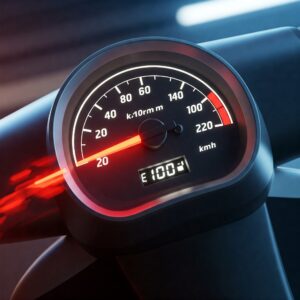
Understanding Speed Limitations on Electric Scooters
Before attempting to make your e scooter faster, it’s essential to understand why manufacturers implement speed limitations in the first place.
Factory Speed Restrictions: Why They Exist
Most commercial electric scooters come with built-in speed limitations, typically ranging from 15 to 25 miles per hour. These restrictions serve several purposes:
✅ Legal compliance: Many regions have specific speed limits for electric scooters to classify them as personal mobility devices rather than motor vehicles
✅ Safety considerations: Manufacturers implement these limits to reduce accident risks and ensure the mechanical components can handle operational stresses
✅ Battery optimization: Speed restrictions help preserve battery life and ensure consistent performance across varying conditions
✅ Warranty protection: Modifications that override factory settings often void warranties, as they can strain components beyond design specifications
According to research from the International Transport Forum, electric scooters with speeds exceeding 25 mph significantly increase the risk of serious injuries in the event of accidents. This explains why many jurisdictions cap legal e scooter speeds at this threshold.
Know Your Local Laws
Before pursuing any speed enhancements, familiarize yourself with local regulations governing electric scooter usage. In the United States, laws vary significantly by state and municipality:
- California restricts electric scooters to 15 mph on streets and bike lanes
- New York City permits speeds up to 20 mph for electric scooters
- Florida allows speeds up to 30 mph on designated roads
The Consumer Product Safety Commission provides guidance on electric scooter safety standards, including speed-related concerns. Exceeding locally permitted speeds may result in fines, impoundment of your scooter, or even more severe penalties.
Selecting Naturally Faster Electric Scooters
One of the most straightforward approaches to experiencing higher speeds is simply purchasing an electric scooter designed for enhanced performance. The market now offers numerous models capable of 25 miles per hour electric scooter performance and beyond.
Premium High-Speed Electric Scooter Options
If you’re in the market for a naturally faster ride, consider these top performers:
- Apollo Ghost – This remarkable scooter features dual 1000W motors delivering speeds up to 34 mph and impressive climb capabilities. The Apollo Ghost combines speed with stability, making it a favorite among enthusiasts seeking the electric scooter fastest options without compromising safety.
- Kaabo Wolf Warrior 11 – A beast among electric scooters, this model features dual 1200W motors that can propel riders to speeds of 50 mph under ideal conditions. The Kaabo Wolf Warrior 11 represents the pinnacle of consumer electric scooter performance.
- EMOVE Cruiser – While not the absolute fastest, this single-motor scooter still achieves impressive 30mph electric scooter performance while offering exceptional battery life of 50+ miles per charge.
- Zero 10X – This dual-motor powerhouse delivers speeds up to 40 mph while maintaining excellent handling characteristics, making it one of the more controllable high-speed options.
- Dualtron Thunder – Boasting a combined 5400W of power from its dual motors, this premium scooter can reach speeds of 50 mph, firmly establishing itself among the electric scooter fastest contenders.
| Model | Top Speed | Motor Power | Range | Price Range |
|---|---|---|---|---|
| Apollo Ghost | 34 mph | Dual 1000W | 39 miles | $1,500-$1,700 |
| Kaabo Wolf Warrior 11 | 50 mph | Dual 1200W | 70 miles | $2,900-$3,200 |
| EMOVE Cruiser | 30 mph | Single 1000W | 62 miles | $1,400-$1,600 |
| Zero 10X | 40 mph | Dual 1000W | 40 miles | $1,700-$2,000 |
| Dualtron Thunder | 50 mph | Dual 2700W | 75 miles | $3,700-$4,000 |
| NANROBOT D6+ | 40 mph | Dual 1000W | 45 miles | $1,600-$1,800 |
💬 Just one click – help others make better buying decisions too!😊
✅ Take Action Today for Faster, Safer Rides! 🔋
➡ Ready to experience the thrill of faster electric scooter riding? Start by assessing your current model’s capabilities, researching legal requirements in your area, and exploring the options outlined in this guide. Remember that safety equipment should be upgraded proportionally with speed increases – investing in quality protection is always worthwhile.
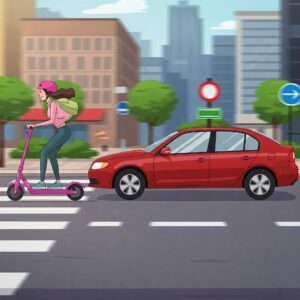
Key Specifications for Speed Enthusiasts
When evaluating potential high-speed scooters, pay particular attention to these specifications:
- Motor power: Higher wattage generally correlates with increased speed potential. Look for dual motors totaling 1800W or more for serious performance.
- Battery capacity: Higher voltage batteries (typically 48V or 52V) deliver more power to motors. According to battery technology experts at Battery University, lithium-ion batteries with higher voltage ratings generally provide better performance for high-drain applications like electric scooters.
- Controller capabilities: The electronic speed controller (ESC) determines how efficiently power flows from battery to motor. Premium controllers offer better acceleration and top speed.
- Weight rating: Ensure the scooter is rated to handle your weight plus any cargo you typically carry, as exceeding weight limits dramatically reduces performance.
- Tire type and size: Pneumatic (air-filled) tires generally provide better traction and handling at higher speeds compared to solid tires.
The Cost of Speed
It’s worth noting that faster electric scooters typically command premium prices. While basic models might cost $300-$500, high-performance scooters capable of 30mph electric scooter speeds or higher generally start around $1,500 and can exceed $4,000 for the most extreme models.
Consider whether the additional investment aligns with your needs – for many urban commuters, the difference between 20 mph and 30 mph may not justify doubling or tripling your budget.
Software Modifications to Increase Electric Scooter Speed
For those with existing electric scooters looking to enhance performance, software modifications represent a potentially accessible approach to make your e scooter faster.
Removing Speed Limiters
Many electric scooters implement speed restrictions through firmware rather than hardware limitations. This means that with the right approach, you might be able to bypass or modify these restrictions:
- P-Settings Adjustment: Some scooters, particularly those using generic controllers, have accessible “P-settings” that control various performance parameters. To access these:
- Power on your scooter
- Press and hold the power and mode buttons simultaneously (varies by model)
- Navigate to settings related to speed limitation (often labeled P4, P5, or similar)
- Adjust values according to your desired performance profile
- Custom Firmware: More advanced users might explore custom firmware options for their specific scooter model. Communities like Electric Scooter Guide provide resources for popular models. This approach requires technical knowledge and carries higher risks.
- Manufacturer Apps: Some premium scooters offer companion apps that allow users to select different riding modes, including performance settings that may increase speed capability. The Segway-Ninebot Max, for example, allows users to access advanced settings through their app. The Segway-Ninebot Max provides this functionality while maintaining safety protocols.
⚠️ Important Caution: Software modifications almost universally void manufacturer warranties and may create safety risks if systems aren’t designed to handle increased performance demands.
E-Scooter Speed Modes and Their Customization
Most quality electric scooters offer multiple riding modes:
- Eco mode: Prioritizes battery efficiency, typically limiting speeds to 10-15 mph
- Standard mode: Balances performance and efficiency, usually capping around 15-20 mph
- Sport mode: Maximizes performance, allowing speeds up to the scooter’s designed limit
Some advanced scooters offer customizable rider profiles that let you fine-tune acceleration curves, top speed limits, and regenerative braking intensity. These adjustments can significantly affect your scooter’s performance characteristics without requiring hardware modification.
Hardware Upgrades for Maximum Speed
For those seeking more substantial performance gains, hardware modifications offer the potential to dramatically increase your e scooter’s top speed and acceleration.
Motor Upgrades
The motor is the heart of your electric scooter’s performance system. Upgrading to a more powerful motor can significantly impact top speed:
- Motor replacement: Swapping your stock motor for a higher-wattage unit can dramatically increase performance. For example, upgrading from a 350W motor to a 1000W motor could potentially double your top speed.
- Dual motor conversion: Some scooter frames can accommodate the addition of a second motor, effectively doubling power output. This modification requires significant technical expertise.
- Motor winding adjustments: Advanced users might explore rewinding motors for different KV ratings (RPM per volt), which can optimize for either torque or top speed.
According to electrical engineering resources from MIT OpenCourseWare, electric motor performance depends on a complex relationship between voltage, current, and magnetic field strength. Simply increasing voltage without considering these relationships can lead to motor failure.
Battery Upgrades
Power delivery is critical for achieving higher speeds. Consider these battery upgrade options:
- Higher voltage batteries: Upgrading from a 36V battery to a 48V or 52V battery can significantly increase motor RPM and thus top speed.
- Increased capacity: While not directly affecting top speed, larger capacity batteries (measured in Ah) allow you to maintain peak performance for longer periods.
- Battery configuration: Some advanced users create custom battery packs using high-discharge cells specifically designed for performance applications.
The NANROBOT RS7 utilizes a 60V battery system that helps it achieve remarkable speeds. The NANROBOT RS7 demonstrates how advanced battery technology directly correlates with performance capabilities.
Controller Upgrades
The controller serves as the brain of your electric scooter’s electrical system:
- Higher amperage controllers: Upgraded controllers can deliver more current to your motor, improving both acceleration and top speed.
- Programmable controllers: Advanced controllers allow fine-tuning of acceleration curves, peak current delivery, and other performance parameters.
- Aftermarket options: Companies like Kelly Controllers offer high-performance options compatible with many scooter models.
Mechanical Considerations for High-Speed Operation
As you push your e scooter faster, mechanical components face increased stress:
- Upgraded braking systems: Consider hydraulic disc brakes for improved stopping power at higher speeds.
- Suspension upgrades: Enhanced suspension components improve stability and control at higher velocities.
- Aerodynamic modifications: While less impactful than on motorcycles, streamlined components can marginally improve top speed.
- Weight reduction: Removing non-essential components (like extra lighting) can improve acceleration and top speed.
The 25 Miles Per Hour Electric Scooter Sweet Spot
Many experts consider 25 miles per hour electric scooter performance to represent an ideal balance between exhilaration and safety for daily use. This speed range offers several advantages:
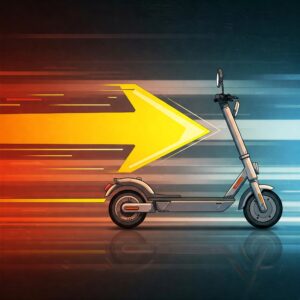
Benefits of 25 MPH E-Scooters
- Legal compliance: Many jurisdictions permit e-scooters up to 25 mph, making these models broadly usable without legal concerns.
- Safety considerations: 25 mph provides significant time-saving benefits while remaining manageable for most riders with proper safety gear.
- Component reliability: Most quality scooters are engineered to handle this speed range reliably over their lifespan.
- Reasonable battery consumption: At 25 mph, many scooters maintain reasonable efficiency, unlike higher speeds that dramatically increase power consumption.
Recommended Models in This Category
Several excellent models naturally achieve or hover around the 25 miles per hour electric scooter threshold:
- Hiboy Titan Pro – This well-balanced scooter offers 25 mph top speed with a comfortable ride and reasonable price point of around $900. The Hiboy Titan Pro delivers exceptional value for speed enthusiasts on a budget.
- Fluid Horizon – With a 25 mph top speed, 500W motor, and 23-mile range, this model offers excellent performance at a mid-range price point.
- Apollo City – This urban-focused scooter reaches up to 25 mph while providing premium features like turn signals and an IP water-resistance rating.
- GOTRAX G4 – One of the more affordable options capable of reaching 25 mph, this model offers impressive performance at a budget-friendly price point.
For riders seeking the perfect balance between speed and practicality, these 25 miles per hour electric scooter options provide an excellent entry point into higher-performance territory without breaking the bank or creating undue safety risks.
Exploring 30MPH Electric Scooter Territory
For riders seeking even more thrilling performance, 30mph electric scooter options represent a significant step up in capability and excitement.
The Experience of 30MPH Riding
Riding a 30mph electric scooter delivers a fundamentally different experience compared to standard models:
- Dramatic time savings: A 30mph electric scooter can reduce commute times by 30-50% compared to standard 15-20 mph models
- Changed riding dynamics: Wind resistance becomes a significant factor, requiring a more aggressive riding posture
- Greater awareness needed: Reaction time requirements increase substantially at these speeds
Safety Considerations at Higher Speeds
With greater speed comes increased responsibility:
- Mandatory safety gear: At 30mph, full-face helmets, protective clothing, and gloves become essential rather than optional
- Increased stopping distance: Physics dictates that stopping distances increase exponentially with speed – a 30mph electric scooter requires nearly twice the stopping distance of a 20mph model
- Road conditions: Surface imperfections that might be minor annoyances at lower speeds can become serious hazards at 30mph
- Visibility to others: Ensuring you’re seen by motorists becomes even more critical at higher speeds
Research published in the Journal of Safety Research indicates that the severity of injuries in electric scooter accidents increases dramatically at speeds above 25 mph, with head injuries being particularly concerning.
Top 30MPH Electric Scooter Models
If you’re committed to experiencing 30mph electric scooter performance, these models deliver exceptional experiences:
- Varla Eagle One – This dual-motor scooter offers speeds up to 40 mph with excellent build quality and value. The Varla Eagle One provides premium performance at a competitive price point.
- INOKIM OxO – Known for exceptional build quality, this premium scooter reaches 30 mph while offering superior comfort and handling characteristics.
- Mantis Pro – A popular choice among enthusiasts, this model offers 40+ mph capability with excellent suspension and component quality.
- VSETT 10+ – This premium scooter not only reaches speeds above 30 mph but offers exceptional range and build quality.
The Price of Speed: 30MPH Models
The jump from 25 mph to 30mph electric scooter models typically represents a significant price increase:
- 25 mph models typically range from $800-$1,200
- Quality 30mph models generally start around $1,600 and can exceed $3,000
This price difference reflects not just more powerful motors and batteries, but also upgraded braking systems, reinforced frames, and enhanced suspension components necessary to safely handle increased speeds.
Maintenance for High-Performance Electric Scooters
Pushing your e scooter faster than standard speeds places additional stress on all components. Proper maintenance becomes increasingly critical:
Critical Maintenance Areas
- Braking systems: Inspect pads and discs regularly, as wear accelerates significantly at higher speeds. Replace pads when thickness falls below 2mm.
- Tire condition: Check tire pressure weekly – under-inflated tires reduce speed capability and increase blowout risk. Most pneumatic e-scooter tires require 40-50 PSI.
- Motor temperature: Monitor motor temperature during extended high-speed operation. Motors running consistently above 140°F/60°C may sustain damage. Allow cooling periods during aggressive riding.
- Battery health: Use battery management systems to monitor cell balance and overall health. According to research from Stanford University, lithium-ion battery degradation accelerates when frequently discharged at maximum rates.
- Structural integrity: Regularly inspect frame welds and connection points for any signs of stress or fatigue, particularly after riding at maximum speeds.
Maintenance Schedule for High-Performance Scooters
| Component | Inspection Frequency | Maintenance Action |
|---|---|---|
| Brakes | Before each ride | Check function; inspect pads monthly |
| Tires | Weekly | Check pressure and tread condition |
| Suspension | Monthly | Inspect for leaks; check fasteners |
| Battery | After 30 full charge cycles | Run calibration cycle; check voltage balance |
| Controllers | Monthly | Check connections; inspect for heat damage |
| Structural | Monthly | Inspect frame, stem, and folding mechanisms |
✅ Take Action Today for Faster, Safer Rides! 🔋
➡ Ready to experience the thrill of faster electric scooter riding? Start by assessing your current model’s capabilities, researching legal requirements in your area, and exploring the options outlined in this guide. Remember that safety equipment should be upgraded proportionally with speed increases – investing in quality protection is always worthwhile.
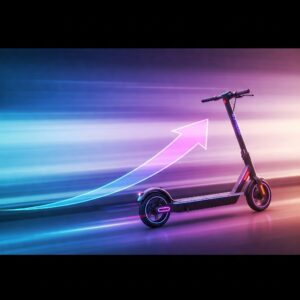
Following this maintenance schedule can dramatically extend the lifespan of your high-performance electric scooter while ensuring safety at elevated speeds.
Practical Speed Enhancement Techniques
Beyond technical modifications, several practical approaches can help maximize your e scooter’s speed potential:
Riding Technique for Maximum Speed
- Weight distribution: Shifting your weight forward slightly can reduce front-end lift during acceleration, allowing faster launches.
- Aerodynamic positioning: Adopting a tucked position with elbows in and knees close to the deck can reduce drag by up to 30%.
- Surface selection: Smooth, hard surfaces allow significantly faster speeds than rough or soft surfaces. According to physics principles outlined by Khan Academy, rolling resistance varies dramatically based on surface characteristics.
- Optimal tire pressure: Maintaining the maximum recommended tire pressure reduces rolling resistance and increases top speed.
Weight Considerations
Your weight and any cargo significantly impact performance:
- Rider weight: A 180-pound rider might experience 15-20% lower top speed than a 130-pound rider on the same scooter.
- Cargo minimization: Each additional pound of cargo reduces potential top speed. Consider whether items can be left behind for maximum performance.
- Weight distribution: Centering weight over the scooter’s center of gravity provides optimal handling and performance.
Environmental Factors Affecting Speed
Several external factors influence how fast your e scooter can travel:
- Wind conditions: Headwinds of just 10 mph can reduce top speed by 15-20%.
- Temperature: Battery performance degrades in extreme temperatures, particularly cold weather below 40°F/4°C.
- Elevation changes: Climbing even modest hills can reduce speed by 50% or more, depending on motor power.
- Surface type: Concrete allows faster travel than asphalt, which is faster than packed gravel or other rough surfaces.
Battery Management for Speed Optimization
Battery performance directly affects speed capability:
- Charge level: Maximum speed is typically available only above 50% charge. Performance may drop by 10-15% when battery charge falls below 30%.
- Temperature conditioning: Allowing batteries to reach optimal operating temperature (typically 70-85°F/21-29°C) before maximum exertion improves performance.
- Charging practices: Following manufacturer recommendations for charging helps maintain battery health and performance.
Becoming the Electric Scooter Fastest Enthusiast
For those truly passionate about achieving maximum electric scooter performance, joining the community of speed enthusiasts offers numerous benefits:
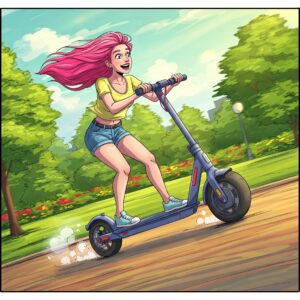
Online Communities and Resources
- Forums and groups: Websites like Electric Scooter World and Reddit’s r/ElectricScooters provide valuable information exchange.
- YouTube channels: Content creators focused on electric scooter performance offer visual guides to modifications and reviews of the fastest models.
- Local groups: Many cities have e-mobility meetups where enthusiasts share tips and experiences.
Responsible High-Speed Riding
Being the fastest doesn’t mean being reckless:
- Appropriate locations: Utilize private property, closed courses, or areas specifically designated for higher-speed electric vehicles.
- Safety first: Invest in quality safety gear proportional to your speed capability – full-face helmets, padded jackets, and gloves are essential for high-speed riding.
- Skills development: Practice emergency braking, obstacle avoidance, and weight shifting at progressively higher speeds to build competence.
- Weather awareness: Reduce speed in wet conditions, as braking distances increase dramatically and traction decreases.
Insurance Considerations
As you push your e scooter faster, insurance becomes increasingly important:
- Liability coverage: Standard homeowner’s or renter’s insurance may not cover incidents involving modified electric scooters.
- Specialized policies: Some insurance providers now offer specific coverage for electric scooters and other personal mobility devices.
- Documentation: Keep records of all modifications in case questions arise following an incident.
The Competitive Edge
For those interested in organized competition:
- Electric scooter racing leagues: Organizations like the Electric Scooter Championship host events worldwide.
- Time trials: Many enthusiasts document and share personal best times on standardized courses.
- Performance tracking: Apps like Strava allow tracking and comparing performance metrics with other riders.
Legal and Ethical Considerations
When pursuing a faster e scooter, responsible riders must consider legal and ethical implications:
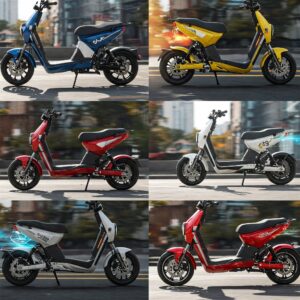
Know and Follow Local Laws
Electric scooter regulations vary dramatically by location:
- Speed limits: While your scooter might be capable of 30mph, local laws may restrict operation to 15-20 mph in public areas.
- Required safety equipment: Many jurisdictions mandate specific safety gear, particularly at higher speeds.
- Restricted areas: Bike lanes, sidewalks, and certain road types may prohibit electric scooters regardless of speed.
The National Association of City Transportation Officials provides resources on varying regulations across U.S. cities.
Warranty Implications
Modifications typically void manufacturer warranties:
- Reversible modifications: Some enthusiasts implement modifications that can be reversed before warranty service.
- Risk assessment: Consider whether the performance gains justify potentially losing warranty protection.
- Documentation: If pursuing modifications, thoroughly document original configurations for potential restoration.
Environmental Impact
Higher speeds affect sustainability:
- Energy consumption: Operation at maximum speed can reduce range by 50% or more compared to moderate speeds.
- Battery lifecycle: Frequent high-power discharge can accelerate battery degradation, potentially leading to earlier replacement.
- Responsible disposal: Ensure proper recycling of any components replaced during upgrades.
Finding Your Electric Scooter Speed Sweet Spot
Not everyone needs or should pursue maximum possible speed. Consider finding your personal optimal balance:
Assessing Your Actual Needs
- Commute analysis: Track your typical routes to determine whether increased speed would provide meaningful time savings.
- Skill level: Honestly evaluate your comfort and skill level with handling at higher speeds.
- Budget constraints: Calculate the total cost of achieving your desired speed, including the scooter itself, modifications, and additional safety gear.
The Balancing Act: Speed vs. Range
Higher speeds dramatically affect range:
- The 20-40-60 rule: As a rule of thumb, operating at 20 mph might deliver the stated range, while 30 mph reduces range by roughly 40%, and 40 mph can reduce range by up to 60%.
- Daily needs: Consider whether you need maximum speed for your entire journey or just portions of it.
- Charging access: If you have convenient charging at your destination, range concerns may be less significant.
The “Just Right” Formula
For many riders, the optimal formula balances several factors:
- 75% rule: Consider operating at approximately 75% of your scooter’s maximum capability for daily use, reserving full performance for special circumstances.
- Speed-comfort equation: The ideal speed is one where you still feel fully in control and can comfortably scan for hazards.
- The performance triangle: Balance speed, range, and component longevity rather than maximizing any single factor.
Conclusion: The Future of Electric Scooter Speed
As technology advances, we can expect continued evolution in electric scooter capabilities. Current trends suggest several exciting developments on the horizon:
Emerging Technologies
- Advanced battery chemistry: Solid-state batteries promise higher energy density and discharge rates, potentially allowing greater speed without increased weight.
- Motor innovations: Axial flux motors and improved efficiency designs may deliver more power while consuming less energy.
- Smart speed management: Adaptive systems that adjust maximum speed based on location, traffic conditions, and rider behavior could make higher speeds safer.
Making the Right Choice for You
As you consider how to make your e scooter faster, reflect on these key questions:
- What speed do you genuinely need for practical purposes?
- What safety measures are you willing to implement at higher speeds?
- How will increased speed affect other aspects of your scooter’s performance?
- Are you prepared for the additional maintenance requirements of high-performance operation?
Whether you choose a naturally fast model like the Apollo Ghost, pursue modifications to your existing scooter, or simply implement better riding techniques, finding your perfect balance of speed and practicality will enhance your electric scooter experience.
Remember that responsible riding at any speed contributes to the positive perception of electric scooters as a legitimate transportation option, helping to ensure continued access and favorable regulations for all riders.
✅ Take Action Today for Faster, Safer Rides! 🔋
➡ Ready to experience the thrill of faster electric scooter riding? Start by assessing your current model’s capabilities, researching legal requirements in your area, and exploring the options outlined in this guide. Remember that safety equipment should be upgraded proportionally with speed increases – investing in quality protection is always worthwhile.
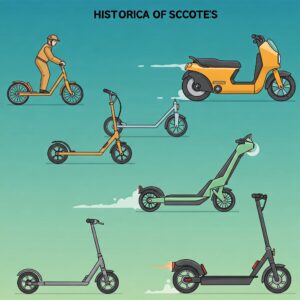
More FAQs
❓ How fast can the fastest electric scooters go?
✅ The fastest commercial electric scooters can reach speeds of 60-70 mph, with models like the Dualtron X and Rion RE90 exceeding 70 mph under ideal conditions. Most high-performance consumer models typically range between 40-50 mph...
❓ Is a 25 miles per hour electric scooter street legal?
✅ Legality varies by location. In most US states, 25 mph electric scooters are street legal on roads with speed limits up to 35 mph and in bike lanes. However, some cities have stricter regulations limiting speeds to 15-20 mph...
❓ How much does a 30mph electric scooter typically cost?
✅ Quality 30mph electric scooters typically cost between $1,500-$3,000. Entry-level models capable of this speed start around $1,200, while premium options with better components and longer range can exceed $4,000...
❓ What battery voltage is needed for a fast electric scooter?
✅ For speeds exceeding 30 mph, electric scooters typically require 48V or 52V battery systems. The fastest models use 60V or even 72V systems, which provide significantly more power to the motors...
❓ Do faster electric scooters require special licenses or insurance?
✅ Requirements vary by location. In many US states, electric scooters capable of speeds over 20-25 mph may be classified as motor vehicles requiring registration, insurance, and potentially a driver's license or moped permit...
Recommended for You:
- 10 Lightest Mobility Scooter Options That Will Empower Your Freedom Like Never Before in 2025
- 10 Amazing Hover1 Electric Scooter Models That Will Transform Your Urban Commute in 2025
- 10 Essential Electric Scooter Repair Techniques Every Rider Must Master in 2025
Disclaimer: This article contains affiliate links. If you purchase products through these links, we may earn a small commission at no additional cost to you.
✨ Found this helpful? Share it with your friends! 💬🤗
